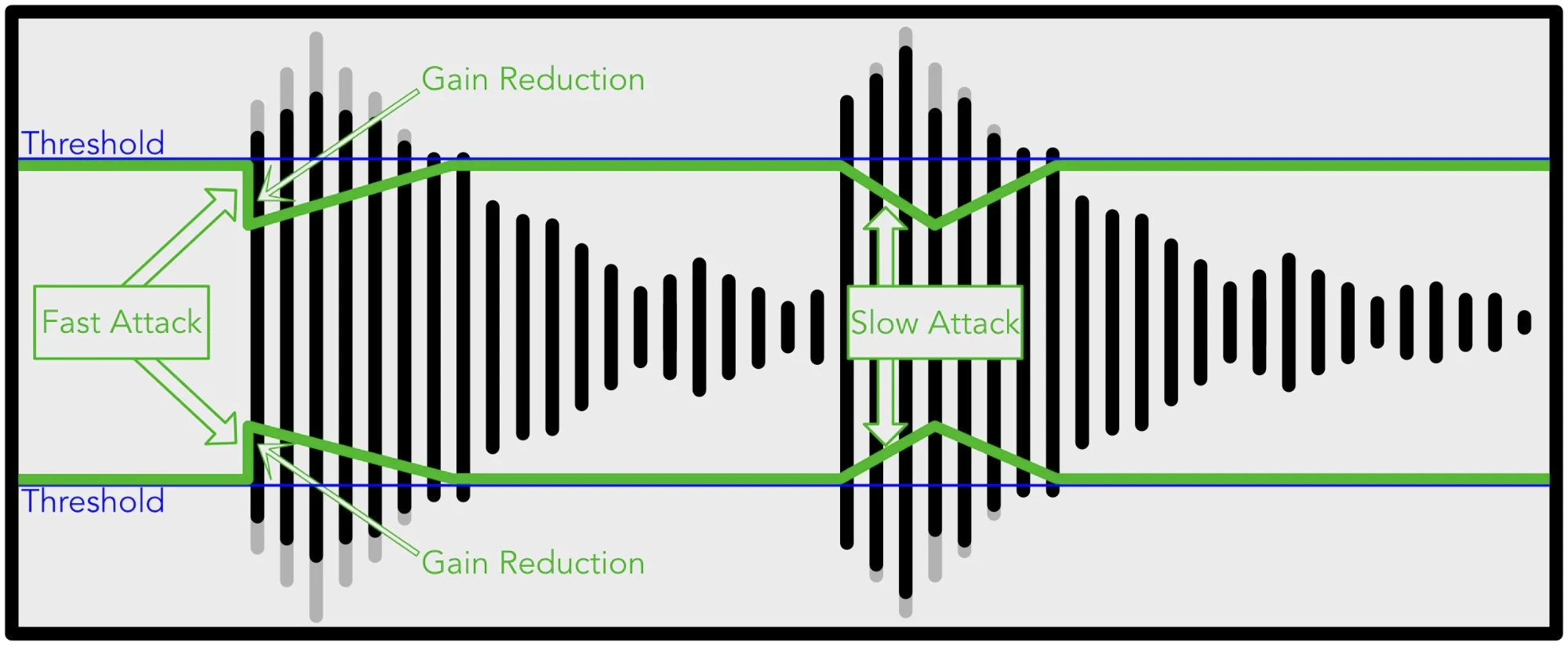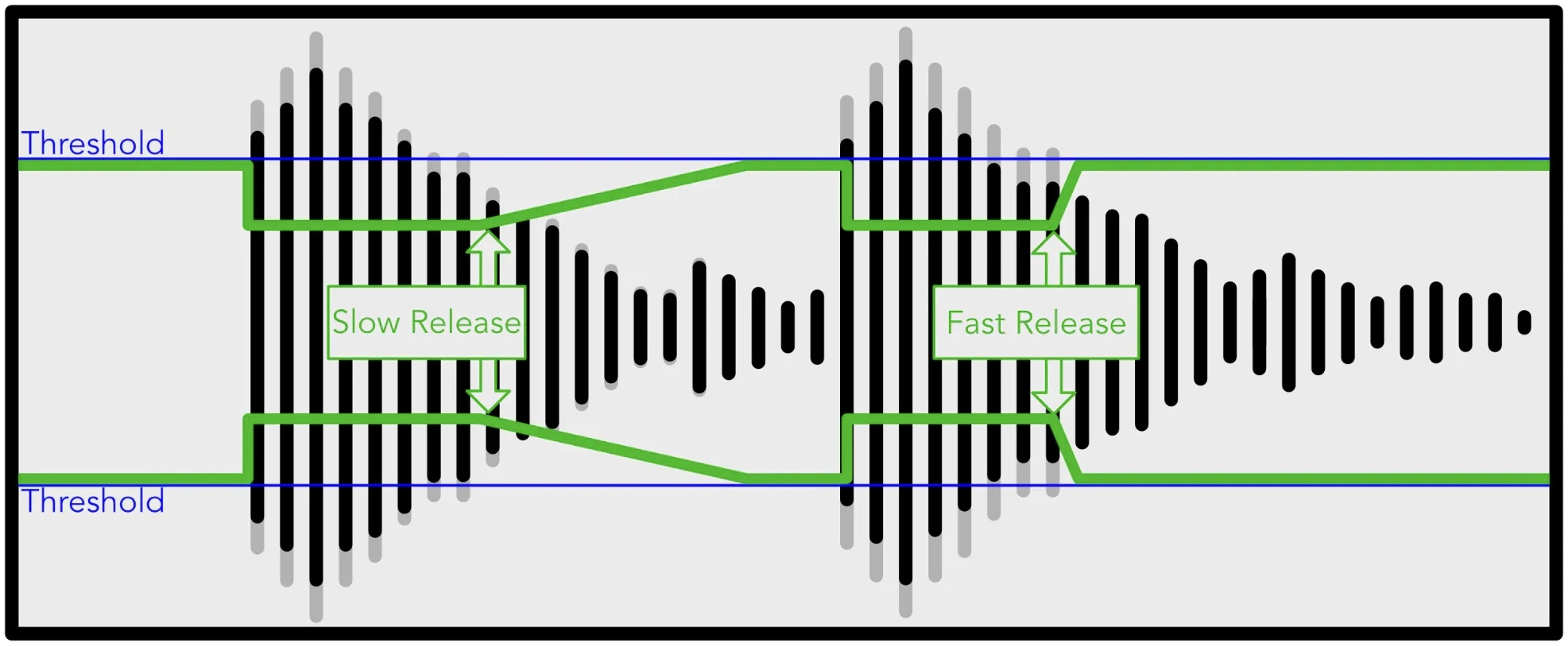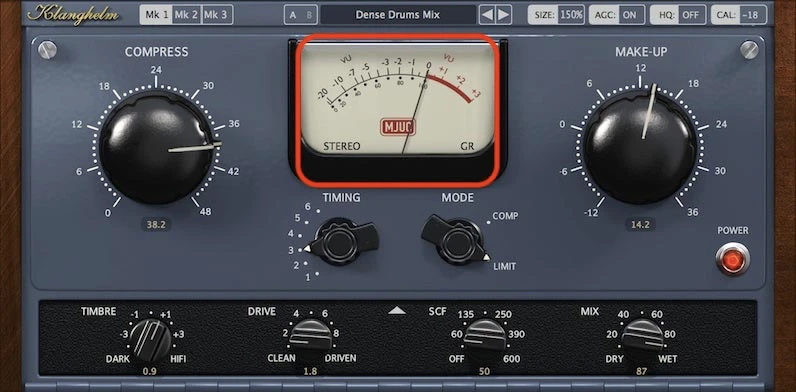Attack and Release settings hold special significance among the various parameters involved in compression, which we will talk about today. In this blog, we delve deep into understanding the basics of Attack and Release, their impact, and factors to consider when setting these!
In simple terms, "Attack" refers to the parameter of audio compression that determines how quickly a compressor will respond to the incoming audio signals once the signal exceeds the preset threshold. The Attack Setting in a compressor controls the time it takes for the compressor to engage and begin applying gain reduction to the uncompressed audio signal.
A fast Attack time will command the compressor to respond quickly, reducing the level of the audio signal almost instantaneously.
A slower Attack time will let the initial portion of the audio signal, including the transients, pass through without any compression before the compressor starts its process.

Adjusting the Attack setting will allow you to control the dynamic range of your sound. , making quieter parts more audible and reducing excessive peaks for a more balanced and controlled mix.
Fast Attack times can be used to control the transient peaks, creating a more consistent and controlled sound. In contrast, Slow attack times can be useful for retaining the natural dynamics of an audio source and avoiding unwanted artefacts.
The Attack Compressor Setting greatly influences the tonal characteristics of the sound you want to produce, as a fast Attack time will emphasize the transient and high-frequency content, and a slower Attack time will smoothen the sound by emphasizing the mid-range frequencies, eventually giving the sound a much warm and rich character.
One of the most important changes that Attack brings to the table is that you can achieve a much more balanced sound and ensure that certain elements, such as drums or vocals, stand out (or blend in) just how you want them to be.
A faster attack time can be used to create a sound effect that is much smoother and more even with less emphasis on the initial transient, while a slower attack time will allow the initial attack to come through more evidently, creating a higher punch and impact of the same soundtrack.
The Release knob on the Audio Compressor kind of does the exact opposite of the Attack time as it determines the time it takes for the Compressor to stop the compression after the signal falls below the preset threshold.
A shorter Release time will result in quicker recovery and less sustain, as the Compressor will stop working on the sound immediately.
On the other hand, a higher Release time will extend the compression effect by allowing the Compressor to continue to work on the signal even after it has fallen below the threshold levels.

A fast release time can cause the pumping effect to kick in, where the volume fluctuates rhythmically as the gain reduction disengages abruptly. While a slower release time can create a breathing effect, where the audio's perceived loudness or dynamic range subtly expands as the compressor takes longer to recover after the signal has dropped below the threshold.
Sustain technically means the duration or length of a musical note after its initial attack, and this effect be manipulated using the Release Time. A shorter Release will allow you to preserve the natural decay of a sound, while a longer Release will simply extend the sustain, producing a more pronounced and controlled effect.
Indirectly, the Release setting is also responsible for how the Compressor will respond to the subsequent audio signals, and this is why technicians will use a faster Release time to allow the compressor to recover and respond to new peaks quickly. A slower Release time will give them a smoother, gradual recovery.
While the Release setting will not change the actual volume of the sound, it can greatly affect the perceived loudness of a sound. A shorter Release time will often produce a more consistent sound level by reducing the dynamic range, making the perceived loudness higher, while a higher Release time will give the signal more time and maintain the natural dynamic range.
To master Attack and Release settings in Audio Compression, you must first understand the factors you should consider before setting up the settings to create the desired outcome.
Before tweaking the compression parameters, we recommend you understand the original audio material first. This will allow you to realize the sound's natural dynamic range, transient characteristics, and overall feel.
Also, consider the genre of music you want to create and the instruments used to make informed decisions.
Remember to spend time understanding the source of the sound, as different sounds will have varying Attack and Release requirements. For example, Drums will benefit from a faster Attack time to control the initial impact, while vocals usually need a much slower Attack time to contain the natural expressiveness and dynamic range.
Drawing from our experience, we always recommend new players in the industry begin with moderate Attack and Release times as a starting point, as they will give you an understanding of how these settings affect your Compressed Sound.
Once you have the initial draft, work into and fine-tune the settings to achieve the type of compression or sound you desire. Remember always to make incremental adjustments to the Attack and Release times and see what changes it does to the original signal.
While this might not be true for all cases, at most times, you should look for a balance between transparent dynamic control and the artistic intent you are creating. A Compression that is too transparent will kill the desired impact and character of the sound, while an excessively compressed signal will sound unnatural and squashed.
Technology is evolving daily, and utilizing it is the best thing to do. Look for Compressor plugins that provide visual feedback, such as gain reduction meters and waveform displays.
These visual tools will allow you to monitor the effectiveness of your Attack and Release settings and make more informed decisions instead of relying on your ears all the time.

You should always perform A/B comparisons by toggling the compression on/off. This will allow you to realize the clear impact of your settings on the uncompressed sound. See if you are going in the right direction or not so that you don’t waste any time in getting closer to your desired sonic vision.
Never forget that your compressed sound will be placed in a final mix with other elements, so you should always consider the context of the final mix.
Talking from our experience, there have been times when a track sounded great in isolation but did not fit well when placed with the final mix. One should continuously reference your mix and ensure that the Attack and Release settings contribute to a cohesive and balanced result.
By now, you must have understood that the primary application of Release and Attack time settings is to achieve dynamic control and leveling in untouched audio signals. Attack and Release settings allow you to tame peaks and lows, reducing the dynamic range to produce a consistent, cohesive, and balanced sound.

Properly setting the Attack time on vocal tracks can enhance intelligibility. Controlling the Attack can help manage sibilance (harsh "s" sounds) and plosive sounds (such as "p" and "b" sounds), resulting in clearer and more articulate vocals.
As Sound Engineers, we know that Attack and Release time is of great use when you want to control the room ambiance captured during a recording. When the ambience sound is unwanted and becoming distracting, using a faster Release time allows us to reduce the level of the room reflections and create a more focused and clean sound. Don’t forget that a slower Release time will get the ambience to blend with the direct sound, adding a sense of space and depth.
A Sidechain Compression is impossible without the correct Release and Attack time settings. With a fast Attack time, you can allow the sidechain compressor to quickly reduce the sound level in response to the triggering element. In contrast, the Release time enables you to create rhythmic shaping and rhythmic pumping effects.
Keeping aside their technical applications, Release and Attack time allows Sound Professionals to explore their artistic expression and sound design. You can achieve unique texture, shape the envelope of a sound, and craft distinct sonic signatures by creatively manipulating these settings allowing you to push the boundaries of conventional sound design.
Attack and Release Settings are useful in compact studios and live sound scenarios, where controlling dynamics is critical. Using the right Attack settings will help you ensure a consistent and controlled audio experience for the audience, preventing any sudden or unwanted changes in the volume levels.
In conclusion, you should know that understanding and mastering Attack and Release settings in audio compression have become a crucial skill if you want to be an Audio Engineer or a Music Producer as they shape a sound's dynamic character, punch, and sustain.
Release and Attack time settings are useful for a particular domain and have wide-ranging applications in all forms of Audio Production. By experimenting, listening attentively, and considering the musical context, you can harness the power of Attack and Release settings to bring out the best in your recordings and achieve a balanced mix, crafting unique textures or adding rhythmic interest to your music.
♥ - Joseph SARDIN - Founder of BigSoundBank.com - About - Contact
Be the first to give an opinion!